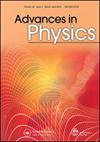Topological effects in nanomagnetism: from superparamagnetism to chiral quantum solitons
IF 13.8
1区 物理与天体物理
Q1 PHYSICS, CONDENSED MATTER
引用次数: 320
Abstract
Micromagnetics has been the method of choice to interpret experimental data in the area of microscopic magnetism for several decades. In this article, we show how progress has been made to extend this formalism to include thermal and quantum fluctuations in order to describe recent experimental developments in nanoscale magnetism. For experimental systems with constrained dimensions such as nanodots, atomic chains, nanowires, and thin films, topological defects such as solitons, vortices, skyrmions, and monopoles start to play an increasingly important role, all forming novel types of quasiparticles in patterned low-dimensional magnetic systems. We discuss in detail how soliton–antisoliton pairs of opposite chirality form non-uniform energy barriers against thermal fluctuations in nanowires or pillars. As a consequence of their low barrier energy compared to uniform reversal, they limit the thermal stability of perpendicular recording media. For sufficiently short samples, the non-uniform energy barrier continuously merges into the conventional uniform Néel–Brown barrier. Partial formation of chiral domain walls also determines the magnetic properties of granular nanostructured magnets and exchange spring systems. For a long time, the reconciliation between micromagnetics and quantum mechanics has remained an unresolved challenge. Here it is demonstrated how inclusion of Berry's phase in a micromagnetic action allows for a semiclassical quantization of spin systems, a method that is demonstrated by the simple example of an easy-plane spin. This powerful method allows for a description of quantum dynamics of solitons and breathers which in the latter case agrees with the anisotropic spin-½ XYZ-model. The domain wall or soliton chirality plays an important role as it is coupled to the wavevector of the quasiparticle dispersion. We show how this quantum soliton chirality is detected by polarized neutron scattering in one-dimensional quantum antiferromagnets.纳米磁性中的拓扑效应:从超顺磁性到手性量子孤子
几十年来,微磁学一直是解释微观磁学领域实验数据的首选方法。在这篇文章中,我们展示了如何将这种形式主义扩展到包括热和量子波动,以描述纳米尺度磁性的最新实验进展。对于具有受限尺寸的实验系统,如纳米点、原子链、纳米线和薄膜,拓扑缺陷,如孤子、漩涡、skyrmions和单极子开始发挥越来越重要的作用,它们都在图案低维磁性系统中形成新型准粒子。我们详细讨论了手性相反的孤子-反孤子对如何在纳米线或纳米柱的热波动中形成非均匀能量垒。由于与均匀反转相比,它们的势垒能较低,因此限制了垂直记录介质的热稳定性。对于足够短的样品,非均匀能垒不断地合并到常规的均匀nsamel - brown能垒中。手性畴壁的部分形成也决定了颗粒状纳米结构磁铁和交换弹簧系统的磁性。长期以来,微磁学与量子力学的协调一直是一个未解决的难题。这里演示了如何在微磁作用中包含贝瑞相允许自旋系统的半经典量子化,这种方法通过一个简单的易平面自旋的例子来证明。这种强大的方法允许描述孤子和呼吸子的量子动力学,后者符合各向异性自旋- 1 / 2 xyz模型。畴壁或孤子手性与准粒子色散的波矢量耦合在一起,起着重要的作用。我们展示了如何通过偏振中子散射在一维量子反铁磁体中检测这种量子孤子手性。
本文章由计算机程序翻译,如有差异,请以英文原文为准。
求助全文
约1分钟内获得全文
求助全文
来源期刊

Advances in Physics
物理-物理:凝聚态物理
CiteScore
67.60
自引率
0.00%
发文量
1
期刊介绍:
Advances in Physics publishes authoritative critical reviews by experts on topics of interest and importance to condensed matter physicists. It is intended for motivated readers with a basic knowledge of the journal’s field and aims to draw out the salient points of a reviewed subject from the perspective of the author. The journal''s scope includes condensed matter physics and statistical mechanics: broadly defined to include the overlap with quantum information, cold atoms, soft matter physics and biophysics. Readership: Physicists, materials scientists and physical chemists in universities, industry and research institutes.
 求助内容:
求助内容: 应助结果提醒方式:
应助结果提醒方式:


